The Dark Half (1993)
Directed by: George A. Romero
Written by: George A. Romero
Starring: Amy Madigan, Julie Harris, Michael Rooker, Timothy Hutton
USA
AVAILABLE ON DUAL FORMAT BLU-RAY AND DVD: NOW, from EUREKA ENTERTAINMENT
RUNNING TIME: 122 mins
REVIEWED BY: Dr Lenera, Official HCF Critic
Young Thad Beaumont has an operation to remove a tumour from his brain. During the operation, it’s discovered that far from being a tumour, the growth is a twin brother of Thad’s that never developed. Years later, Thad is a successful author, writing his serious books under his own name, and his pulp money-makers under the pseudonum “George Stark”. When blackmailed by someone who has discovered his secret, Thad publicly “buries” George Stark. However, a series of gruesome murders then begin to occur and Beaumont increasingly becomes the prime suspect – though it actually seems that Stark has become a physical entity and returned from the grave.…
I remember when Secret Window, which was similarly based on a Stephen King book, came out and I immediately thought, “This sounds rather like The Dark Half”. After I’d seen the film, being already a bit of an arrogant know-it-all, I said several times to people, “Well, it was quite good – but The Dark Half was better”. Almost none of those people had even heard of The Dark Half, and it’s quite astonishing how a collaboration by one of the best known and popular horror writers and George Romero, a filmmaker whose ‘living dead’ movies [well, certainly the first three] remain iconic even if much of his non-zombie work hasn’t received the attention it often should have, remains so little known and seen outside of horror fandom. After all, their first effort together Creepshow is still a fondly remembered and much liked movie. One reason could be that King movies were coming out in droves at the time it came out and this particular one got sort of lost. The same year we had The Lawnmower Man and Needful Things, and these three efforts were sandwiched by Misery and The Shawshank Redemption which appealed to far more than just the horror crowd. Well in any case, let’s hear it for The Dark Half, one of the more underrated and neglected King-based movies. It’s basically King and Romero do Dr. Jekyll And M. Hyde combined with stalk and slash, which sounds like many a horror fan’s dream. Add to this the fact that, even if you’re unaware of the facts I detail below, it was clearly a very personal story for King in which he seems to be combating demons of more than one kind – and you have one intriguing and chilling horror, anchored by a strong central performance by the underrated Timothy Hutton, that to me just falls short of being up there with the Carries and The Shinings, largely due to King being somewhat undecided as to exactly why all this weird stuff is actually going on.
The story of this film was part autobiographical, being inspired by events that led to him revealing his own writing pseudonym of “Richard Bachman”. King went to great lengths to pretend that Bachman was a real entity, allegedly to discern whether his ability to sell untold millions of books rested more on the King brand than his talent. Fans soon unearthed the connection between King and Bachman. The Dark Half was the last novel he wrote before becoming completely sober after an alcohol addiction. Romero himself wrote the screenplay, sticking very close to the novel despite combining two characters into one. Unlike with Monkey Shines where he was a hired hand, he took the project to Orion who promptly okayed it but, as before, Romero suffered much interference including insistence that the finale was replaced by a gorier climax. It was entirely shot in and around Pittsburgh close to Romero’s home. Timothy Hutton was difficult to work with at times due to being “in character” throughout shooting, and even quit the film for a few days during the production. Four thousand five hundred cut throat finches were used for the sparrows in the film. They would consume one hundred pounds of birdseed and fifteen gallons of water on a daily basis during the production, and huge netting had to be put up around the set, though many of them hid when the time came to photograph them. Digital composites ended up being used for much of the climax. A scene of Stark taking some characters hostage was shot, but later cut so we instead had a shocking revelation. The film’s release was delayed for two years by bankruptcy problems with Orion Pictures, and Australians had to wait a further year to see it. Box office and reception was so-so.
The 1968 prologue introduces a motif that turns up elsewhere in King several times – a childhood trauma that returns to haunt the adult. In fact, while I’ve read far less King novels than I’ve seen King-based movies [and I haven’t seen anywhere near all of them either, maybe that should be Doc’s next HCF project?], even I was soon aware that this film is full of King themes and references. A writer who finds himself in deep s***, the Castle Rock town setting right down to the same Sheriff character appearing in both this and Needful Things, The Shining reminding of in both the fact that the lead character was once an alcoholic [like King] and a variation on that frightening, “all work and no play makes Jack a dull boy” scene, Beaumont’s first typewritten story being called Here There Be Tygers which is also the title of the first short story King ever wrote, and so forth. I’m sure that there are loads of other things of this nature that I failed to pick up on. Anyway, young Beaumont has a seizure while writing, and then another one some time later when about to catch the bus to school. Doctors take a look, and we’re greeted with the really freaky sight of an eye and an only vaguely possible to discern nostril and tooth seem inside Beaumont when his stomach is cut open. The effects convince and it’s just really queasy. It seems that Beaumont had a twin that never developed and which is being absorbed. The film later tells us that one in ten people start off with twins. I doubt that this is true, but I don’t know enough about the subject to be sure. We rejoin Beaumont as a happily married adult, and we soon get the scene that you see in many older versions of the Jekyll and Hyde story where Jekyll lectures to a classroom of students about there being two selves,only here the “inner” self, the one usually kept at bay, is partially freed when writers write, at least when they really get into what they’re writing. And this is a good thing – maybe….
Somebody called Fred Clawson realises that the would-be respectable Thad Beaumont is actually George Stark who writes brutal crime novels often featuring an Alexis Machine, and which sell extremely well. Stark smoked, drank, and used a specific typewriter, and I probably don’t at all need to mention the subtext of all this. Clawson intends blackmail, so Beaumont stages an elaborate burial of Stark. Now let me deviate slightly to praise Hutton’s performance, something I’ll do again later, because he’s brilliant at hinting at dark depths within his character here, much like Spencer Tracy did so well in 1941 in similar circumstances – and if that isn’t high praise, I don’t know what is. And this darkness erupts when folk connected with Beaumont begin to meet horrible ends, beginning with Royal Dano in his last screen appearance. Romero never made a fully fledged slasher in the Friday The 13th mode, but here he really shows himself to be adept at build up and staging this kind of thing. This being 1992, the camera often cuts away from the nastiest details or they are obscured, but the idea that this killer likes to make his victims suffer before he offs them is disturbingly shown in a scene where he brutally torments a lady with connections to Beaumont, including a wince-inducing bit where he squeezes one of her wounds. I distinctly recall this film being considered quite strong stuff here in the UK at the time of its cinema release, considering that it came out during a time when the BBFC were very tough and often routinely cut bits out of movies. The do-er of these horrible deeds has the same fingerprints as Beaumont, so it must be him, right, despite Beaumont protesting innocence and having solid alibis? As I think about this film, a great majority of the two hours just consist of Sheriff Alan Pangborn, superbly played by Michael Rooker who never really matched the impact that his portrayal of Henry: Portrait Of A Serial Killer but who delivers a perfectly modulated performance here [you can tell that his character likes Beaumont wants to believe him and hates the fact that he may have to arrest him] turning up to question Beaumont, interspersed with Stark killing people. And yet one is gripped throughout.
A lot of this is down to Romero who may have been uncomfortable working with a big studio, but to me this doesn’t show in the finished film. He was never the most ‘showy’ of directors, but one has to admire the way so many sequences are meticulously set up, and he obviously felt free enough to provide a bit more stylisation than was usual for him, like one particular kill sequence in a hallway where the light flickers red and blue [maybe Romero was playing tribute to his sometime collaborator and friend Dario Argento], or the moment early on before the violence starts where, just for a moment, the camera doesn’t seem to be too interested in the people who are talking and instead lingers on the New York skyscrapers out of a window, during which we can just about hear a scream. Some fans will disagree, but I feel that Romero was hugely engaged with this project, no doubt hoping it would be the big hit that he rightfully thought that he deserved. A dream sequence featuring a smashed vase, a falling apart chicken in the fridge and a porcelain face shattering to reveal a skull beneath, is only one of several moments that suggest a looser, more surreal approach than what he normally did, yet the most disturbing part of said scene just involves black trousers appearing beside white trousers. Somehow this is tremendously unsettling. With all due respect, the blame for the flaws in the story can be laid at the feet of King. It’s obvious that he couldn’t decide on an explanation for some stuff, so opted instead to give us several without actually deciding. The sparrows that Beaumont seems to hear at times and which appear on a few occasions before causing an especially gruesome death at the climax [which actually extends a similar scene in Lucio Fulci’s Manhattan Baby], are explained – but it’s rather wish washy, and let’s not dwell on some of those early computer effects which seemed poor even in 1992 – though on the other hand one has to praise the “double” effects, they’re often seamless!
Indeed for much of its length The Dark Half, which limits its humour to the odd line from Stark such as, “it’s a cut throat business” just after he’s slashed somebody’s throat, creates such a genuinely creepy atmosphere that it manages to override most of the flaws. Christopher Young’s music score, expertly combining strings, synths, piano and a children’s choir to nerve-jangling effect, plays a major ingredient in this, and after watching this film you’ll never think of Are You Lonesome Tonight?in the same way. The undying theme of Art vs Commerce gives matters allegorical significance – it’s never quite stated, but at times it seems that Beaumont might actually need Stark to exist just so he can write low brow “trash” again. One can read the story as a warning against writers [and by dint film-makers] who attempt to better themselves too much and rise above their station even though their heart and even skill lies with so-called “lower” material, which King tells us writers should never be ashamed of writing. And Hutton is truly excellent. All he needs is slicked back hair, new eyebrows, a fuller build and a Southern accent and he’s Beaumont’s evil alter ego. I was enjoying the psychological aspects of the final confrontation between Beaumont and Stark so much, largely due to Hutton’s acting, that it was almost a shame that it spilled over into physical action. But I think that there’s quite a lot going on in The Dark Half, it’s a film that literally screams for far more analysis than I’ve given it as I didn’t want to give all the plot away, and yet it produces and mostly maintains that chill that us horror lovers continually seek in a film.
Rating: 









The Dark Half was previously released on Blu-ray on Region A by Scream Factory in 2014. Since there’s no wording about a new restoration, I reckon that Eureka are using the same master but given it a new encode. Some of the many dark scenes have some black crush, depth seems to vary on a few occasions, and a few black marks appear. However, this is still no doubt the best the film has ever looked. Non-black colour balancing is mostly fine and there’s lots of detail. Don’t expect miracles and you’ll be still be fine with the result overall. And Eureka have ported over all the Scream Factory special features and added one of their one, making for a pretty strong package overall.
The old George Romero audio commentary from the DVD is one of Romero’s better talk tracks, though to be fair he’s usually good, and here radio talk show host Stuart Feedback Andrews asks all the right questions, Romero then feeling free to be quite candid about Orion and studios in general, and not in a favourable way. He’s clearly proud of the film though, so he seems happy, and happy to talk. We here how Gary Oldman [no disrespect to Hutton, but he would have been amazing] and Willem Dafoe were almost cast, how he had serious issues with Hutton’s method acting and cinematographer Tony Pierce-Roberts who was used to doing Merchant-Ivory films and thought little of horror movies, and about that period where Romero made no movies but was continually active. Very good.
This is followed by the George Romero and Tom Savini episode of the Son of the Incredibly Strange Film Show, a series on Channel 4 UK TV which was a follow-up to The Incredibly Strange Film Show. Back then presenter Jonathan Ross seemed very cool to me; he liked much of the same weird shit I did and was introducing me to further weird shit with these programmes. He perhaps exaggerates when he describes Night Of The Living Dead as the “most ground-breaking horror film ever” , and it skips much of Romero’s work to concentrate on his zombie films. But Ross’s enthusiasm is lovely, we don’t just meet Romero and Savini [who makes Ross up as a zombie] but some of his cast members, and we also see some Pittsburgh locations. The Sparrows Are Flying Again! The Making of The Dark Half does repeat a lot of information that’s in Romero’s commentary, but it’s nice to see many of the people involved [no Hutton though], and I found the in-depth detailing of how the bird scenes were done very interesting. I do get the feeling that the full details of Orion’s interference are being withheld, though some of the participants obviously say what they can. Then we get the Deleted Scenes which is more phone stuff between Beaumont and Stark, a nice bit with Pangborn and his wife, the removed kidnap scene I mentioned much earlier, and the original, not quite finished, version of the climax. The Behind-the-scenes and archival video material begins with Special Effects which shows us the filming of the climax in its original form, and is followed by On the Set where we see the shooting of one portion of the finale involving Rooker and Amy Madigan. Check out Romero’s calm directing style. Then there’s the Storyboards for the Original Ending [which is in the Deleted Scenes], the Original Electronic Press Kit, and some Archival Interview Clips where the four principals answer virtually the same questions.
I must admit, it had been so long since I’d seen The Dark Half that, while I remembered it fondly, I thought that watching it with a much more critical eye would reveal it to be not so good. But this wasn’t the case. While it doesn’t really work everything out, it’s really unsettling, crammed full of subtext, and sees Romero on top form as a director. Eureka’s release also comes full of good special features and comes Highly Recommended.
SPECIAL FEATURES
*1080p presentation of the film on Blu-ray (with a progressive encode on the DVD)
*LPCM audio (uncompressed on the Blu-ray) and 5.1 DTS-HD MA audio options
*Optional English SDH subtitles
*Audio commentary with Writer/Director George A. Romero
*George A. Romero episode of Son of the Incredibly Strange Film Show [38 mins] – documentary on the director originally aired on UK television in 1989
*The Sparrows Are Flying Again! The Making of ‘The Dark Half’ [36 mins] – Retrospective with George A. Romero, special make-up effects creators Everett Burrell and John Vulich, visual effects supervisor Kevin Kutchaver, actor Robert Joy, editor Pasquale Buba and more!
*Deleted Scenes [-7 mins]
*A selection of Behind-the-scenes and archival video material:
-Behind the Scenes Footage: Special Effects” featurette [15 mins]
-Behind the Scenes Footage: On the Set” featurette (8 mins]
-Storyboards for the Original Ending 91:17]
-Original Electronic Press Kit [6:43]
-Vintage Interview Clips [7:02]
*Stills Gallery
*TV Spot
*Theatrical Trailer
*Reversible sleeve
*Limited Edition Collector’s booklet featuring new writing on the film by Simon Ward
*Limited Edition O-card Slipcase

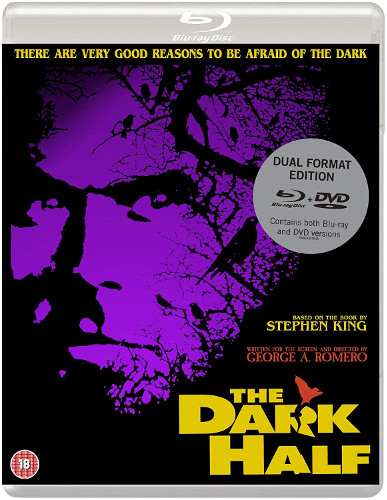
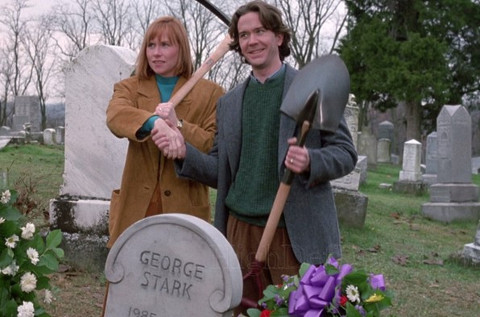
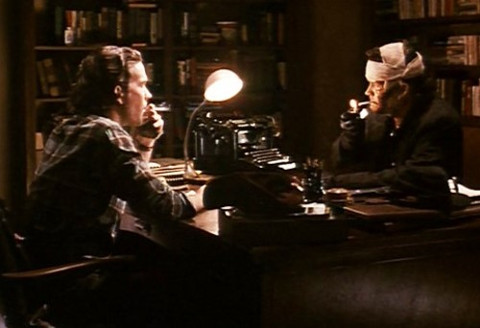


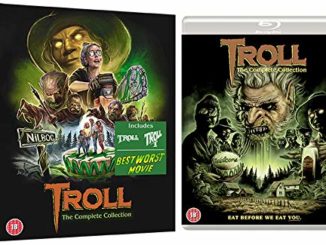
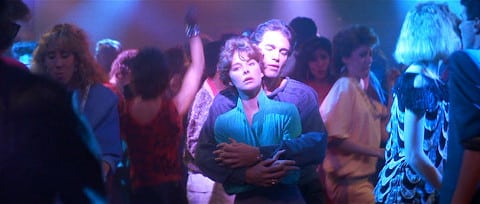
Be the first to comment